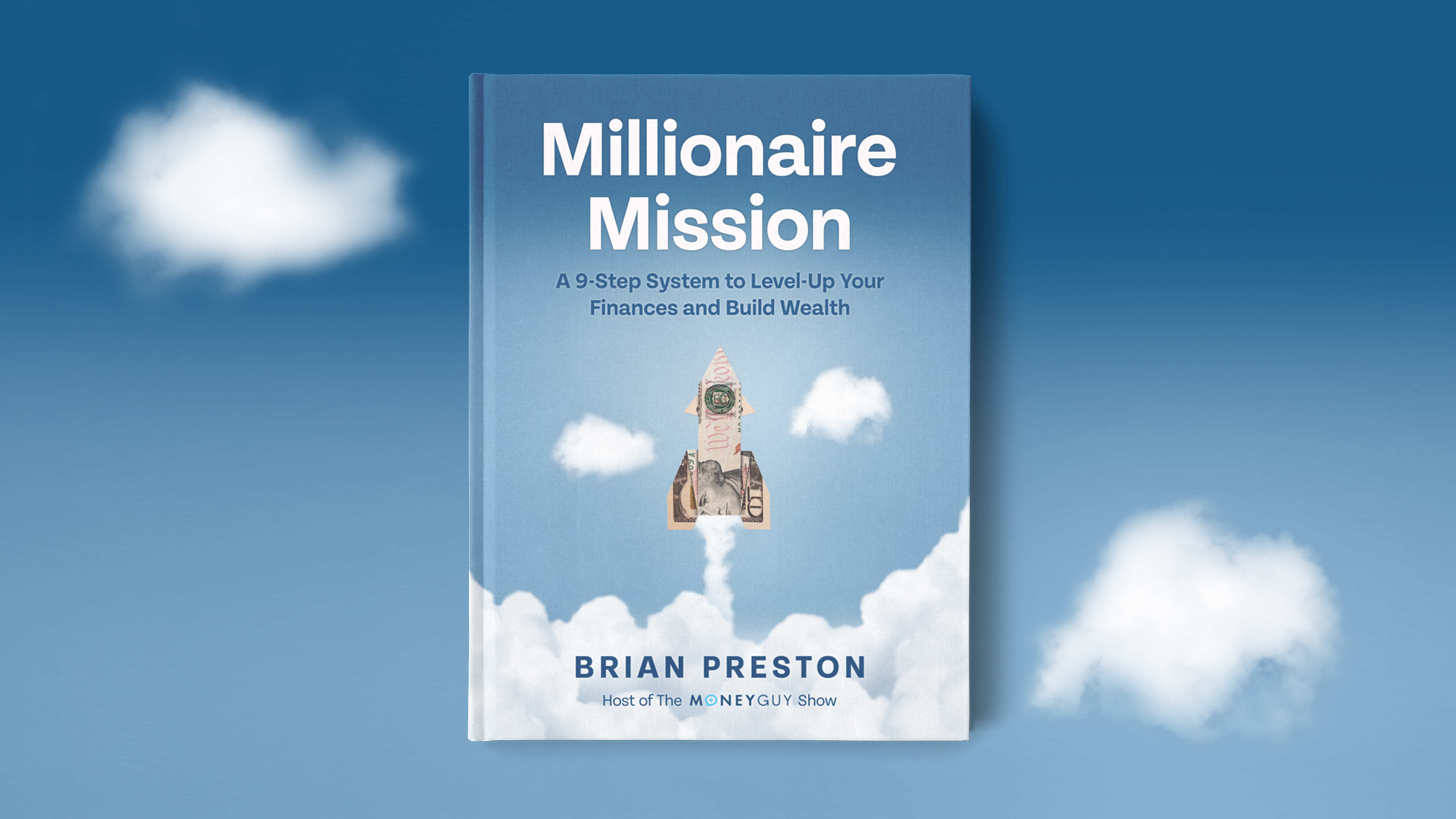
Change your life by
managing your money better.
Subscribe to our free weekly newsletter by entering your email address below.

Subscribe to our free weekly newsletter by entering your email address below.
Feeling panicky about the market downturn? We get it! Let’s break down what a Bear Market really means and why it might not be as scary as you think. Whether you’re a seasoned investor or just starting out, maybe there’s a way you can turn market fear into opportunity.
Like this video? Learn how you can prepare for the next down market in this video: Is The Market DOOMED? How You Can Prepare
Subscribe on these platforms or wherever you listen to podcasts! Turn on notifications to keep up with our new content, including:
Things are looking rough out there. And if your eyes are glued to the news, you might be freaking out. At the time of this recording, the market is down 17.6% from its all time high in February of this year, which means while we are not technically in a Bear Market, we are gettin’ real close. In fact, by the time this video goes out, there’s a chance we’ll be there already. AND YET, I am SO excited to be recording this because we at Money Guy love to be able to speak to people’s concerns about the market, provide them with what they need to know, and keep them on a common-sense course toward a better financial life. Did you think I wasn’t gonna say it? Look at me. I am always excited. By the way, be sure to stick around through the whole video. We cover a lot of ground, and there are some actionable takeaways toward the end.
But with all that out of the way, what exactly is a Bear Market? You may be familiar with the term, or you may have at least heard it before, but for those that haven’t, it is a moniker that describe the overall, current trend of market performance. It’s named for the “shape” that the market takes; like a bear’s claw, it spikes downward. This is in contrast to a “Bull Market,” the opposite of a Bear Market, which, like a bull’s horns, slopes upward. You may have also heard the terms “bullish” or “bearish,” but these describe investor BEHAVIOR. And we’re just going over market conditions today.
With that said, we officially ENTER a Bear Market when the market closes a trading day 20% down from the previous high (at the time of this video, that was on February 19, 2025). And again, we’re presently down just shy of 18%, meaning we’re not technically in a bear market. HOWEVER, there was a point within the trading day yesterday that we were MORE than 20% off high, which is a pretty strong indicator that we will be there soon. And whether we enter a bear market or not. People are panicking.
CNN Business periodically publishes what’s known as the “Fear & Greed Index” which is a gauge that takes a bunch of different financial metrics—like market momentum, price volatility, and some others—and measures the emotion that is “driving” the market at present. 0 being the MOST FEARFUL. And yesterday, that number came in at a 4… out of 100. Not 10, unfortunately. That puts the general market sentiment into “Extreme Fear” range.
And with that fear comes investing decisions that are driven by that fear. People hold off investing or even worse, panic and sell at a loss. Here’s the thing, we don’t want you to cash out—or crash out. Let’s look at some historical data, the facts we’re facing today, and what you can do amidst the chaos.
First and foremost: Bear markets are normal. Let me repeat that: NORMAL. Vanguard has recently updated their study called “Why to focus on long-term market results” with data all the way through the end of last year. And what we can see is that since 1972, there has actually been, on average, 1 bear market every 4 years. Now, it’s not that exact, but what it tells us is that these are not “unprecedented times” like a lot of the headlines would have you believe.
Not only that, but historically speaking, dramatic losses in the stock market are followed by strong, prolonged recoveries. In FirstTrust’s “History of US Bear and Bull Markets,” they show that the average total return of Bear Markets from 1942 to 2024 is around -32%, with each Bear Market lasting around 11 months on average. Bull Markets, over that same time period, have had an average total return of 150%, and lasted 4.3 years on average.
So, what does this tell us? The depth of the “canyon” is smaller than the height of the “mountain.” The ups tend to outweigh the downs—not just in frequency, but in magnitude. The gains of the following bull markets was not only enough to offset bear market losses, but to actually make money.
We at Money Guy call this “walking up a mountain with a yo-yo.” Meaning that, yes, in the short-term, you may experience ups and downs and gains and losses. But if you stay the course and are responsible with your money, over time, the ups will outweigh the downs and you’ll come out the other side.
But a lot of people can’t see their money through that long-term lens. They’re focused on the short-term. They’re doomscrolling and seeing the tickers go red, red, red, and they’re freaking out. They wanna sell everything, they think it’s over. Trust me, I’ve been a financial advisor for almost 20 years. I get these phone calls all the time. but historically speaking, cashing out has been a bad move. Let’s go back to the Vanguard study.
They looked at a return distribution of three portfolios that cashed out amidst market volatility—one stayed in cash three months, one six, and one for a full year. They compared this against overall market performance using a 60/40 portfolio. And what they found is that the portfolios that stayed in cash for 3 months had a 74% probability of underperforming the market. The portfolio with 6 months in cash had a 71% of underperforming, and the one that stayed in cash for a full year during market volatility had an 87% chance of underperforming the invested portfolio.
The reason for this is that the best and worst trading days often happen very close together. Generally, around half of the best days happen in down markets, and about half of the worst days happen in positive markets. This means that those investors that went to cash and tried to time their way BACK into the market generally waited too long and missed out on some great gains. There’s an often-quoted stat from the Great Recession that if you missed out on the ten best trading days in the recovery following the Great Recession, you would’ve missed out on 50% of the gains. Fifty. Five Zero.
So, when it comes to investing behavior, we don’t want you to worry, and we certainly don’t want you making decisions that could hurt your wealth-building potential in the long run.
BUT when it rains, it pours. The market does not exist in a vacuum, and during bear markets, other areas of our lives may be affected. These challenging times often come with rising prices across the board, putting additional strain on household budgets. Additionally, job volatility tends to increase during market downturns, creating uncertainty in employment and income stability.
What does all this mean for you? In times of market volatility and economic uncertainty, the key is not to PANIC but to PREPARE. This preparation looks different depending on your age and financial situation, but there are some universal principles that can help everyone navigate these challenging times.
One of the most crucial elements of preparation is maintaining adequate cash reserves. For older investors, we generally suggests more than 18 months’ of expenses. These reserves serve as a critical buffer to avoid being forced to sell investments at a loss during market downturns. When you have sufficient cash on hand, you can ride out market volatility without having to tap into your investment accounts at inopportune times. This strategy helps preserve your wealth and prevents the permanent loss of capital that comes from selling assets at depressed prices.
For younger investors, cash reserves serve a different but equally important purpose. Like we said, during bear markets, economic uncertainty often leads to increased job volatility and potential income disruption—and working-age folks need to be prepared for that. Having a robust emergency fund (we suggest 3-6 months of expenses) becomes essential to weather any potential job loss or reduction in income. This financial cushion provides the security and flexibility to maintain your investment strategy even if your employment situation changes.
Perhaps most importantly for younger investors is to maintain a long-term perspective. While market downturns can be unsettling, they historically present excellent opportunities for those with a longer investment horizon. In fact, if you held and remained invested in the S&P500 for at least six years during any period since 2004, you came out ahead. Every. Single. Time.
Understanding that bear markets are temporary allows you to view market declines as opportunities rather than threats. This perspective helps you stay invested and potentially even increase your investments during market dips, setting yourself up for stronger long-term returns when the market eventually recovers.
Remember, successful investing isn’t about timing the market or making reactive decisions based on short-term volatility. It’s about maintaining a well-thought-out strategy that accounts for both your current needs and long-term goals, while being prepared for the inevitable market cycles that occur along the way.
We appreciate y’all tuning in. If you’re new here, stick around for more common-sense personal finance content like this or send this to someone who needs to see it. We try to be a calming voice amidts the chaos. Leave a like, subscribe if you haven’t already, and we’ll see you in the next one.


How Much Should You Save?
How much of your income can you replace in retirement? You can replace different portions of your income in retirement…
View Resource
Are You a Prodigious Accumulator of Wealth?
Is your net worth on-track for retirement? A Prodigious Accumulator of Wealth (PAW) has twice or more than the expected…
View Resource


How about more sense and more money?
Check for blindspots and shift into the financial fast-lane. Join a community of like minded Financial Mutants as we accelerate our wealth building process and have fun while doing it.




It's like finding some change in the couch cushions.
Watch or listen every week to learn and apply financial strategies to grow your wealth and live your best life.
Subscribe to our free weekly newsletter by entering your email address below.